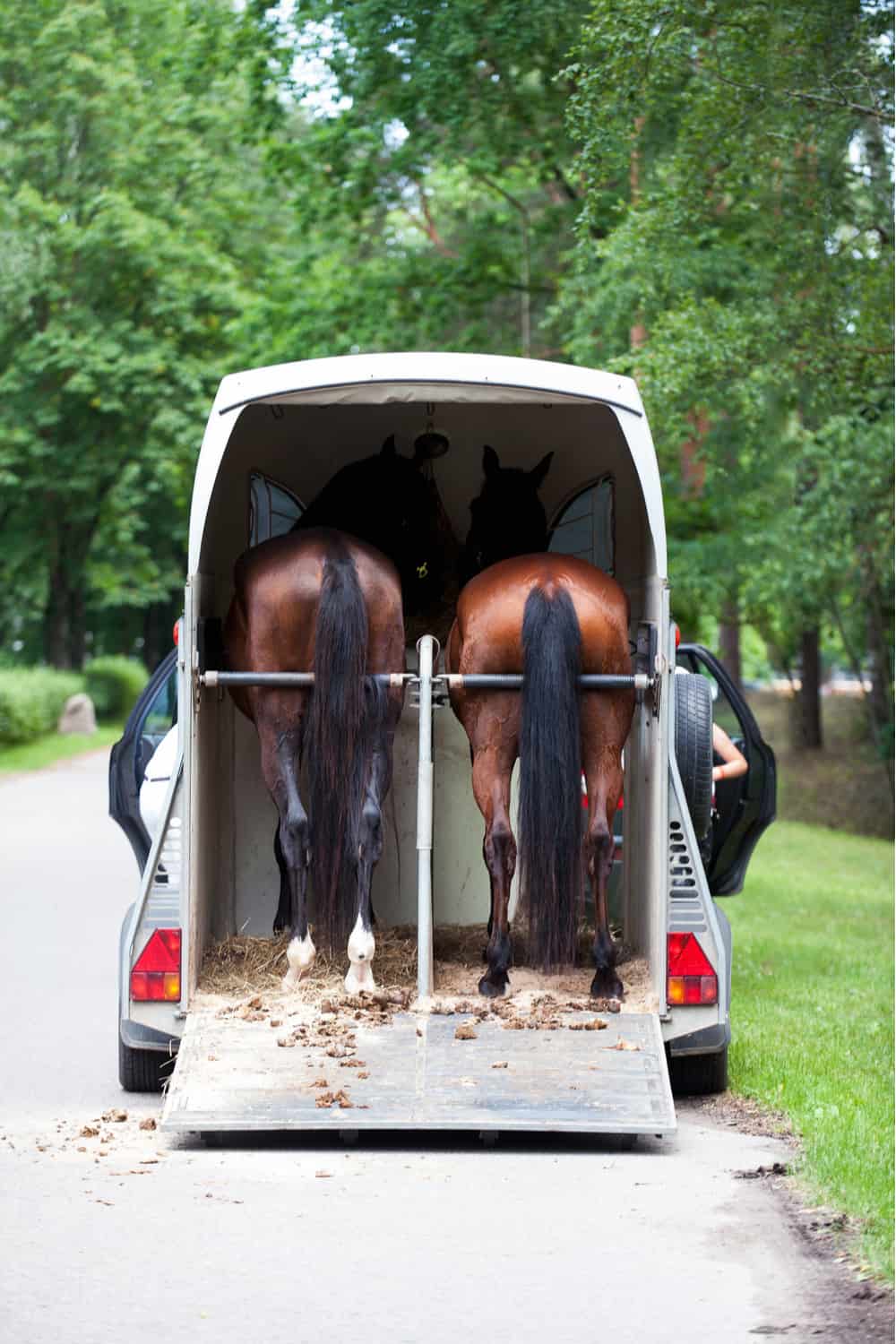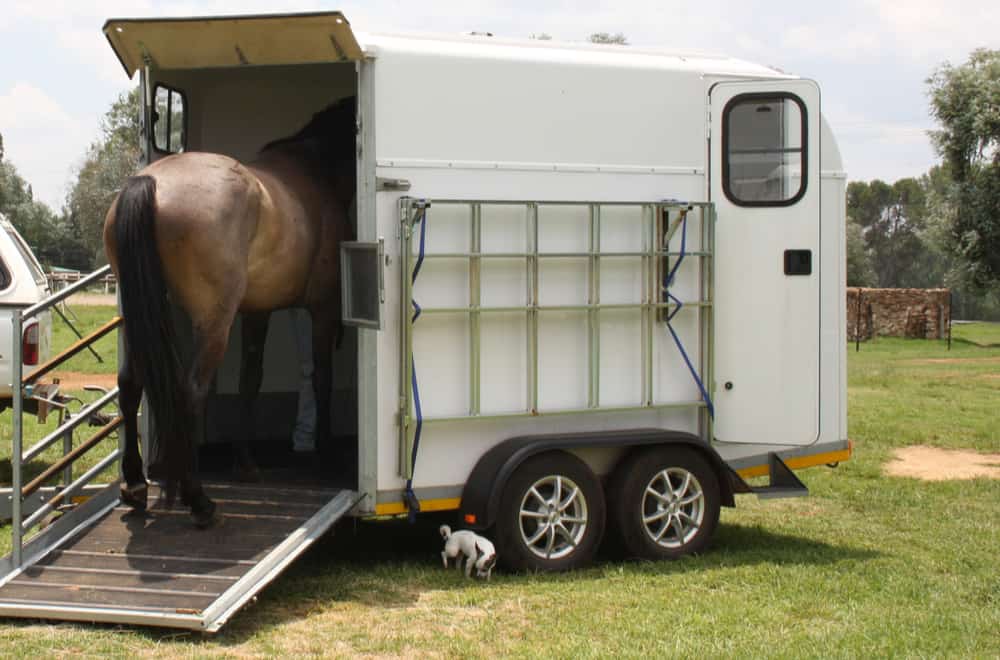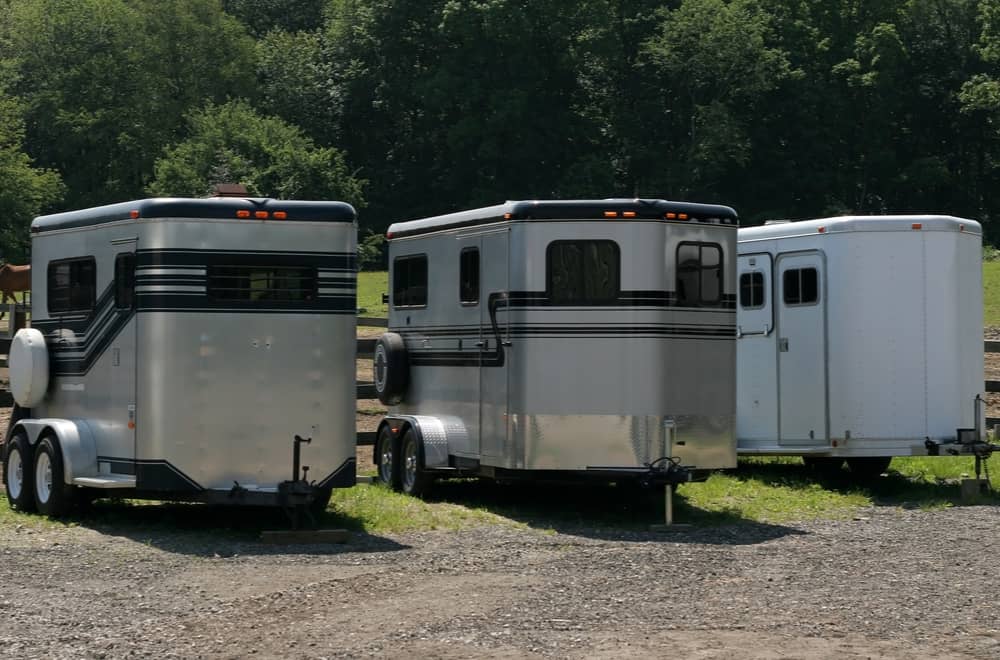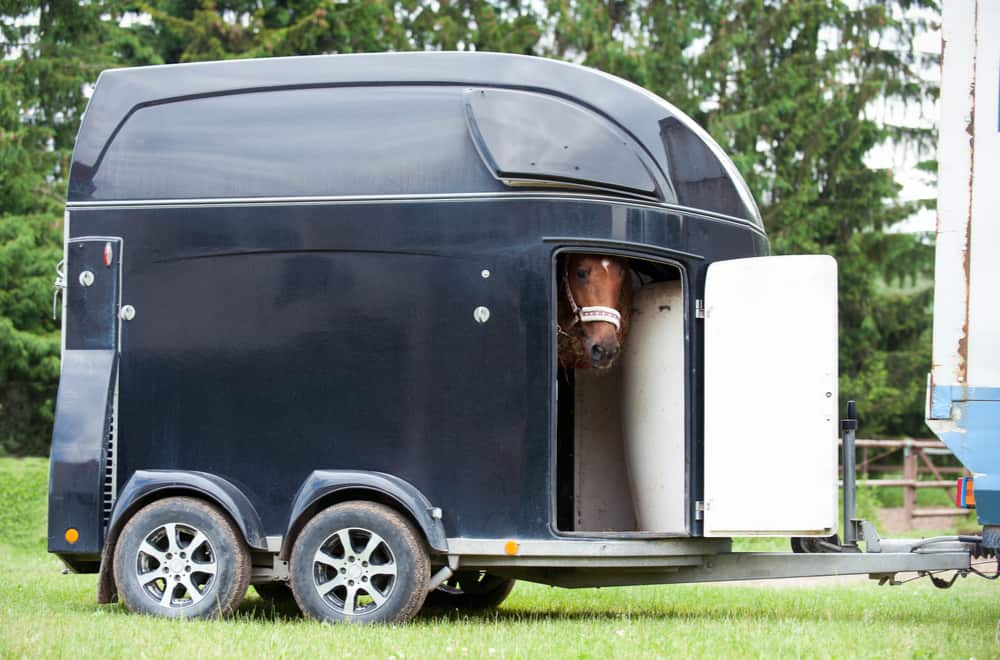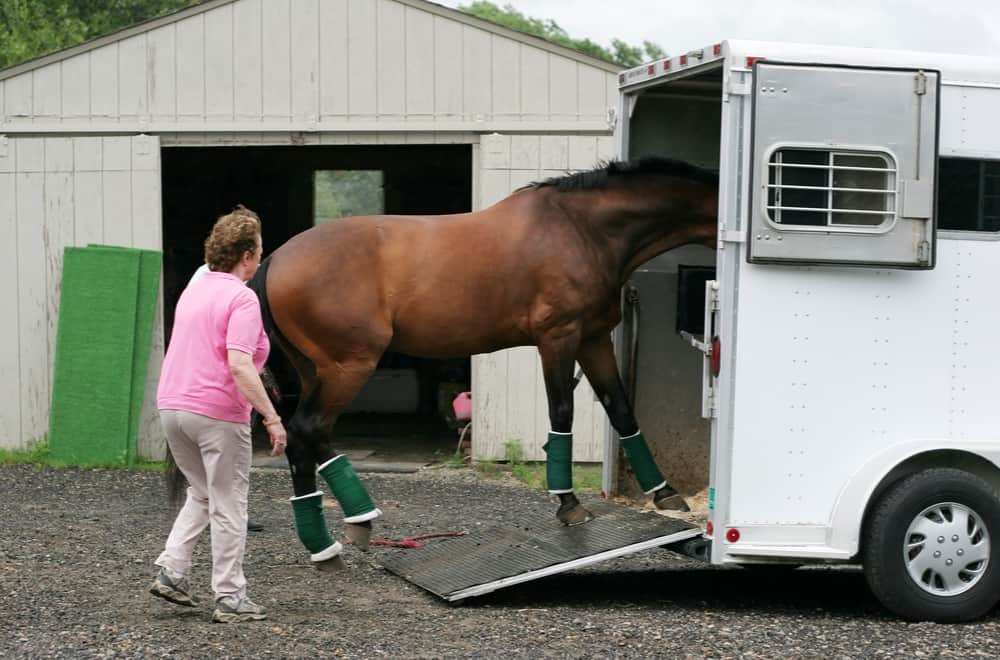A horse trailer is a significant investment that can provide you and your horse buddy with lots of freedom. First, however, you will need to decide which features are essential so you can narrow down which type of trailer is most suitable for your particular needs.
Horse trailers come in various setups; some even include adapted living quarters for those owners traveling for weeks at a time. That said, the pricing for a horse trailer depends on its size, weight, material, hauling capacity, and type of hitch setup.
So, how much is a horse trailer? Let’s read on to find out.
Horse Trailer Considerations
Before we get into the nuts and bolts of buying a horse trailer suitable for you and your horse’s needs, you should be aware of the various types of trailers available.
When looking for a horse trailer, you should consider how your horse will enter the trailer, how you plan to tow it, and its overall design and configuration.
Do you need to get from one show or competition to the next, or do you plan on traveling the country in search of the most treasured natural areas for riding your horse?
These are all critical questions and concerns to contemplate if you are in the market for a horse trailer.
Types Of Horse Trailers
When researching the different types of horse trailers available on the market, you need to begin by considering their size and design. Of these, there are probably just as many designs as there are horse breeds.
You will also want to understand how the trailer attaches and whether or not your vehicle’s towing capacity will allow you to haul the trailer safely.
When shopping around for equine transportation options, it would be helpful to think ahead about the configuration of the trailer.
Questions you may want to ask yourself include:
- How will my horse travel in the trailer?
- What is the most comfortable way for me to exit the trailer after loading up the horses?
- Is there extra space to store tack and other equipment necessary?
To say that selecting a horse trailer is cut-and-dry would be an understatement. In addition, if you are new to the equine universe, you may feel a mix of uncertainty and pressure.
My immediate advice before anything else is to take a breath and relax. The truth is, not every horse owner can afford a horse trailer or the towing vehicle capable of pulling the load.
The good news is that once you become a horse owner, you become part of an extraordinarily tight-knit community. Horse lovers will not hesitate to lend a hand, and you will find it easier than you think to find someone who will help you and your transportation needs.
Even if finances are not a big obstacle for you, I would still recommend that you don’t jump into a trailer purchase right away. Instead, it would behoove you to hitch rides with other horse owners that do have trailers.
Speak to professionals in your area and get some hands-on experience with the range of configuration and design options available.
Used or New?
No doubt about it, having a horse trailer is a practical solution to your transportation needs as a horse owner. Just like when shopping for a vehicle, you always have the option to purchase new or used.
There are additional considerations to think of when deciding between a new or used trailer. Still, most importantly, you will want to find a reliable and cost-effective option that suits you and your horse.
Most products suffer from depreciation, which can benefit you if you are in the market for a horse trailer. According to HorseRacingSense.com, “horse trailers generally depreciate by 25% every three years.”
This source also suggests that a basic horse trailer can range from $2,000 to $30,000, depending on the design factors I have mentioned earlier. So if the trailer you are interested in purchasing is priced new at $30,000, you could potentially save $7,500 within three years.
If you find a used trailer that interests you, ensure that the previous owner can demonstrate its mechanical and electrical maintenance record. In addition, have a trusted friend or professional thoroughly inspect the flooring, lighting, tires, undercarriage, and overall interior and exterior condition of the horse trailer.
With a used option, you may forego the factory warranty if none remains, leading to a costly list of repairs that the manufacturer may have otherwise covered.
Also, you may find as many design options available on the used horse trailer market, meaning you need to search long and hard for the best bang-for-your-buck and be happy with that.
Perhaps, one of the most attractive features of a used trailer will be its cost, although you still need to negotiate with sellers on the used trailer market as some will list their trailers at highly elevated prices.
On the other hand, deciding on the significantly more significant investment of a new horse trailer will provide you with a factory warranty that will cover all the critical elements of the trailer. In addition, you will walk off the lot with a trailer that is custom fit to your needs in pristine condition.
Bumper-Towed or Gooseneck Horse Trailer
A bumper-pulled horse trailer is probably the most common trailer used for owners that need to transport one or two horses maximum. These trailers are usually relatively inexpensive and do not need a special towing vehicle to pull them along.
Similar to a U-Haul trailer, you connect this bumper-towed horse trailer with a coupler that connects to the hitch of your towing vehicle.
If you need to transport more than two horses at a time or plan on taking extended trips with your horse companions, then you should budget for a larger gooseneck horse trailer.
Gooseneck trailers consist of the main trailer body and an overhang space. The overhang space design fits over the back of the truck, where a coupler connects inside the towing vehicle’s bed.
Typically, it is agreed upon that the gooseneck-style trailer is safer and much easier to maneuver. In addition, because of the distribution of weight, a gooseneck trailer can handle more weight than a bumper-pulled trailer.
The most significant advantage of opting for a gooseneck trailer is its stability which is critical to the safety of your animals. Generally, the “gooseneck ball is placed in the bed slightly behind the rear axles.”
On the flip side, gooseneck horse trailers will almost always be more expensive than a bumper-pulled trailer. In addition, hookup is more complicated and requires more practical experience than just watching an online tutorial.
Living Quarter Horse Trailer
Be ready to spend from $20,000 to over the $100,000 mark for a living quarter horse trailer depending on the level of luxury you seek. If you travel frequently and love to have your horses nearby, then this is where you want to begin your trailer shopping search.
You can find living quarter horse trailers with a simple yet functional design that includes a bedroom, bathroom, and small kitchen/dining area that will more than get the job done.
But if you have expensive taste, living quarter horse trailer manufacturers will be more than happy to add all the little bells and whistles to design a boutique hotel on wheels.
Money permitting, you can turn the living quarter space into a tiny luxury home with large master bedrooms, fully-outfitted kitchens, bathroom, entertainment centers, and fireplaces if you live in the cold country.
Slant Load vs. Straight Load Horse Trailer
Your horses can either board the trailer from a back gate or side gate. You will find that bumper-towed trailers typically make use of a straight-load trailer.
In a bumper towed trailer, your horse will either step into or walk up a ramp located at the back gate of the trailer. During transit, one or two horses will stand next to each other, facing forward.
These straight-load trailers will often include a front door that allows you a safe exit after walking your horse and getting them situated inside the trailer.
If your needs include transporting more than two horses, you have another option available to suit your circumstances. Horse trailers may also be slant-load, which means that horses will stand next to each other in diagonal stalls.
Your horse can use either the more common rear gate entry or through a side gate in these trailers. An added benefit of slant-load trailers is that there is usually additional room to be taken advantage of by tucking tack and other equipment in those spaces.
Costs of Horse Trailers
I advise that you search equine classifieds such as HorseTrailers, TrailerTrader, or EquineNow as you begin looking for a new or used horse trailer.
Below is a small list that includes the various horse trailers we discussed in this article and their respective market prices.
- 2-horse bumper-pulled trailer slant-load $21,900
- 1-horse gooseneck trailer straight-load $38,000
- 3-horse gooseneck trailer with living quartyers $123,000
- 2-horse gooseneck trailer slant-load $8,500
These prices do not represent the entire market, nor do they include every feature available to your unique design specifications and requests.
Conclusion
No matter your specific needs or situation, there is a horse trailer out there for you. Remember that this is an investment for both you and your horse, and safety and comfort are more important than the price of the trailer itself.
I recommend that you do not rush into any trailer decision, as you are likely to find someone within your local community willing to help out with your transportation needs.
Consider the design and configuration that you require, and have fun in the process of finding the best horse trailer for you.
Please share your experiences traveling with your horse buddy in the comment section below and include any questions you may have about purchasing a horse trailer.

